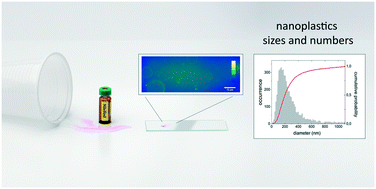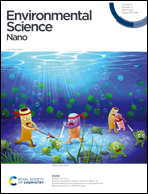Nanoplastic sizes and numbers: quantification by single particle tracking†
Abstract
Plastic particles have been found almost everywhere in the environment, in oceans, terrestrial water bodies, sediments and air. The extent of this unwanted contamination is difficult to fully capture. Existing quantification methods focus on the detection of millimeter to micrometer sized plastic particles, while plastic breakdown processes continue to smaller, nanometer sized, particles. For these nanoplastics, methods that are inexpensive and can be (semi-) automated for high throughput analysis of dilute nanoplastic particle suspensions, are lacking. Here we combine sensitive fluorescence video microscopy, NileRed staining of plastic particles, and single particle tracking (SPT) to count and size nanoplastics. With this approach we show that particle diameters as low as 45 nm can be quantified, mixing ratios of differently sized particles can be recovered, and number concentrations as low as 2 × 106 particles per ml can be determined. These results indicate that this approach is promising for quantifying the sizes and concentrations of nanoplastics released from consumer and medical plastics and potentially in environmental samples.

- This article is part of the themed collection: Recent Open Access Articles


 Please wait while we load your content...
Please wait while we load your content...